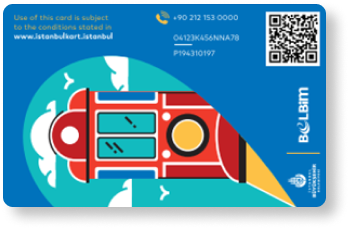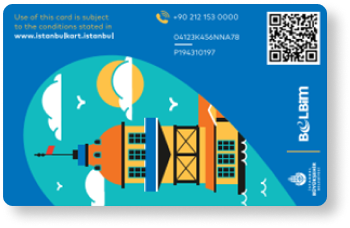
Beyond the Fairy Chimneys: The Fascinating History and Geology of Pasabag Valley
Pasabag Valley, also known as Monks Valley, is a unique and stunning destination located in the Cappadocia region of central Turkey. It is situated about 10 kilometers from the town of Goreme and is one of the most popular attractions in the area. The valley is renowned for its unusual rock formations, which have been shaped by volcanic eruptions and erosion over thousands of years.
Pasabag Valley is a geological wonder, characterized by towering fairy chimneys, some of which reach up to 40 meters in height. These tall, cone-shaped rocks are formed of soft volcanic tuff and have been eroded by wind and water into a variety of bizarre shapes and formations. The valley is a testament to the remarkable power of nature, and it is no wonder that it has become one of the must-visit destinations in Cappadocia.
If you're planning to visit Pasabag Valley and other top attractions in Cappadocia, the Cappadocia Travel Pass® is an excellent investment. Not only does the pass include entrance to Zelve & Pasabaglari Valley, but it also offers access to other popular sites like the Göreme Open Air Museum and the Ihlara Valley. With the pass, visitors can enjoy a seamless and stress-free travel experience, with no need to carry cash or worry about purchasing tickets at each individual site. Chose your pass duration from 1-2-5-10 day options, giving visitors plenty of time to explore all that the region has to offer.
History of Pasabag Valley Cappadocia
The history of Pasabag Valley dates back thousands of years. The region has been inhabited since prehistoric times, and many different civilizations have left their mark on the landscape. In ancient times, Cappadocia was known as Hatti, and it was home to the Hittites, an ancient civilization that flourished in the region from the 18th to the 13th centuries BC.
The Hittites were followed by the Phrygians, who established a kingdom in the region in the 8th century BC. The Phrygians are known for their impressive rock-cut tombs and temples, many of which can still be seen in the area today. During the Roman period, Cappadocia was an important center of early Christianity, and many early Christians lived in the region, including St. Paul.
Pasabag Valley was once home to a hermitage of Christian monks who sought refuge in the valley's fairy chimneys during the early years of Christianity. They lived in the caves and chapels carved into the rocks, and some of these structures can still be seen today. The name "Monks Valley" reflects this history.
In the 13th century, Cappadocia came under the control of the Seljuk Turks, and many of the area's cave churches were converted into mosques during this period. Later, in the 16th century, Cappadocia came under Ottoman rule, and the region's rock-cut churches and monasteries fell into disrepair.
In the 20th century, efforts were made to preserve the region's unique cultural heritage, and many of the rock-cut structures were restored. Today, Pasabag Valley is a popular tourist destination, known for its stunning natural beauty and rich cultural history. Visitors can explore the valley's many rock-cut churches and chapels, as well as enjoy hiking and other outdoor activities amidst the breathtaking landscape of fairy chimneys and unique rock formations.
Geological Formations of Cappadocia Pasabag Valley
Pasabag Valley is a geological wonder, characterized by its unique and stunning rock formations. The valley's fairy chimneys, which are tall, cone-shaped rocks formed of soft volcanic tuff, have been eroded by wind and water over thousands of years to create a variety of bizarre shapes and formations.
The fairy chimneys in Pasabag Valley are some of the tallest in the Cappadocia region, reaching up to 40 meters in height. They are formed from layers of volcanic ash and basalt, which were deposited during a series of violent eruptions millions of years ago. The ash and basalt were later covered by a layer of tuff, a soft and easily eroded rock, which formed the upper portion of the fairy chimneys.
In addition to the fairy chimneys, Pasabag Valley is also known for its mushroom-shaped rocks and cave dwellings. These cave dwellings were once inhabited by monks who sought refuge in the valley during the early years of Christianity. Some of the cave dwellings have been converted into chapels and churches, many of which feature stunning frescoes and intricate carvings.
Visitors to Pasabag Valley can explore the valley's many hiking trails, which offer stunning views of the fairy chimneys and other rock formations. Many of the hiking trails are well-marked, and there are plenty of opportunities to stop and take in the scenery.
It's important to note that some of the formations in Pasabag Valley are fragile and easily damaged, so visitors are encouraged to respect the environment and refrain from climbing on the rocks or otherwise damaging the landscape. Additionally, visitors should be aware that the terrain in the valley can be uneven and rocky, so sturdy footwear is recommended.
Overall, Pasabag Valley is a must-visit destination for anyone interested in geology, nature, or history. With its unique and stunning rock formations, rich cultural heritage, and breathtaking natural beauty, it's no wonder that the valley has become one of the most popular attractions in the Cappadocia region.
What’s There to Do and See in Cappadocia Pasabag Valley
There are many things to do and see in Pasabag Valley, making it a popular destination for tourists visiting the Cappadocia region. Here are some of the highlights:
Explore the fairy chimneys: The fairy chimneys are the main attraction in Pasabag Valley, and visitors can explore the valley's many hiking trails to get up close and personal with these unique and stunning rock formations. Be sure to bring sturdy footwear and plenty of water, as some of the trails can be steep and rocky.
Visit the cave dwellings and chapels: The valley is also home to a number of ancient cave dwellings and chapels, many of which were once inhabited by Christian monks. Visitors can explore these structures and admire the intricate carvings and stunning frescoes that adorn their walls.
Attend a traditional pottery workshop: Pasabag Valley is known for its traditional pottery, and visitors can attend workshops where they can learn about the history and techniques of this ancient art form. Many workshops allow visitors to create their own pottery, which makes for a unique and memorable souvenir.
Take a hot air balloon ride: One of the most popular activities in Cappadocia is taking a hot air balloon ride over the valley. This is a once-in-a-lifetime experience that offers breathtaking views of the fairy chimneys and other rock formations from above.
Enjoy local cuisine: There are plenty of restaurants and cafes in the area that serve traditional Turkish cuisine, including dishes made with local ingredients like lamb, eggplant, and pomegranate. Be sure to try some of the region's famous wines and desserts as well.
Overall, there is plenty to do and see in Pasabag Valley, making it a must-visit destination for anyone traveling to the Cappadocia region. Whether you're interested in history, nature, or culture, there is something for everyone to enjoy in this unique and stunning valley.
Tips About Pasabag Valley Cappadocia
If you plan this amazing place, here are some tips for visiting Pasabag Valley:
Wear comfortable shoes: The terrain in Pasabag Valley can be uneven and rocky, so it's important to wear comfortable, sturdy footwear to avoid slips, trips, and falls.
Dress appropriately: The weather in Cappadocia can be unpredictable, so it's a good idea to dress in layers and bring a jacket or sweater. Additionally, some of the cave dwellings and chapels require visitors to cover their shoulders and knees out of respect, so be sure to bring appropriate clothing.
Bring plenty of water: The climate in Cappadocia is dry and hot, so it's important to stay hydrated while exploring Pasabag Valley. Bring plenty of water and refill your bottle at one of the many fountains in the area.
Respect the environment: The rock formations in Pasabag Valley are fragile and easily damaged, so it's important to respect the environment and refrain from climbing on the rocks or otherwise damaging the landscape. Additionally, be sure to dispose of trash properly and follow Leave No Trace principles.
Hire a local guide: Hiring a local guide is a great way to learn more about the history and culture of Pasabag Valley. Local guides can also help you navigate the area and find hidden gems that you might not discover on your own.
Consider visiting early or late in the day: Pasabag Valley can get crowded during peak hours, so consider visiting early in the morning or late in the day to avoid the crowds and get a more peaceful experience.
Be mindful of cultural differences: Turkey is a conservative country, and visitors should be mindful of local customs and dress modestly out of respect for the culture. Additionally, some areas of the valley may be considered sacred or religious, so be respectful of any signs or restrictions you encounter.
The Cappadocia Travel Pass® is a convenient and affordable way to explore the region's top attractions, including Zelve & Pasabaglari Valley. With this completely digital pass, visitors can skip the ticket lines and enjoy instant access to over 35 attractions and services in the region. In addition to entrance to the valley, the pass also includes discounts on hot air balloon rides, guided tours, and local restaurants. With the Cappadocia Travel Pass®, visitors can make the most of their time in the region and save money on their travels.
FAQ
What is Pasabag Valley?
Pasabag Valley, also known as Monk's Valley, is a scenic area in Cappadocia, Turkey, known for its unique rock formations, cave dwellings, and ancient chapels.
What is the best time to visit Pasabag Valley?
The best time to visit Pasabag Valley is in the early morning or late afternoon when the light is most favorable for photography and the crowds are smaller. Additionally, the valley is less crowded in the offseason, from November to March.
Is Pasabag Valley suitable for children and elderly people?
Pasabag Valley can be challenging for people with mobility issues, as the terrain is uneven and rocky. However, children and elderly people can still enjoy the area with caution and appropriate footwear.
How long does it take to visit Pasabag Valley?
The amount of time needed to visit Pasabag Valley depends on the visitor's interests and pace. Some visitors spend only a few hours exploring the area, while others may spend half a day or more.
Are there any guided tours available in Pasabag Valley?
Yes, there are several guided tours available in Pasabag Valley. Local guides can provide valuable insight into the history and culture of the area, as well as help visitors navigate the terrain safely.
Is it safe to climb on the rock formations in Pasabag Valley?
No, climbing on the rock formations in Pasabag Valley is not safe or recommended. The formations are fragile and easily damaged, and climbing on them can be dangerous for both visitors and the environment.
Are there any restaurants or cafes in Pasabag Valley?
Yes, there are several restaurants and cafes in Pasabag Valley, offering traditional Turkish cuisine and refreshments. Visitors can also bring their own food and enjoy a picnic in the scenic surroundings.
Is there an entrance fee to visit Pasabag Valley?
Yes, there is an entrance fee to visit Pasabag Valley. The fee is moderate and goes towards the preservation and maintenance of the area. Visitors can also purchase a Cappadocia Travel Pass® which includes entrance to the valley along with other attractions and services in the region.




 Travel around Istanbul freely
with Public Transportation Card
Travel around Istanbul freely
with Public Transportation Card
Buy your unlimited Istanbul Public Transportation Card now. We deliver it your hotel before you arrive.





Latest Posts

Why Should You Visit Cappadocia? Updated for 2023
Have you ever wondered where all those lovely photographs of a valley seen from a hot air balloon originate from? Cappadocia, tucked right in the heart of Turkey's Anatolia region, is one of the country's tourism centers, despite its tiny size. And w...

Cappadocia: Hot Air Balloon Flight Guide 2023
Have you ever wondered what it feels like to fly? To float among the birds in the sky and enjoy a bird’s eye view of the gorgeous surroundings around you? Hot air balloons in Cappadocia, Turkey provide just that and more – all the while delivering an...

Underground Cities of Cappadocia
The ancient underground cities of Cappadocia may strike the interest of even the most claustrophobic person! Every year tens of thousands of tourists around the world visit Cappadocia to discover these mysterious caves and learn about their history. ...

How far is Cappadocia from Istanbul?
The distance between Cappadocia and Istanbul is around 730 km (454 miles). This may seem like a lot but think about all the adventures you will experience once you arrive! Furthermore, there are many ways to get there and you will surely find one tha...

Top Things to Do in Cappadocia
Wondering about things to do in Cappadocia? Trying to arrange your trip but there are many question marks. Cappadocia Travel Pass® provides over 25 attractions, with just one pass – so book yours NOW! Here is a list of the main must-do activities but...

The Top 20 Amazing Cave Hotels in Cappadocia
Looking for a unique, one-of-a-kind place to stay in Cappadocia? Why not try a cave hotel? There are plenty of incredible cave hotels in Cappadocia that maintain the region’s history while providing a uniquely modern experience.&n...

Everything About Ihlara Valley
Ihlara Valley, which can be mistakenly written as Ilhara Valley, is a canyon with a depth of around 120 meters and was created by the Melendiz River thousands of years ago. To enjoy this amazing natural beauty, Cappadocia Travel Pass offers yo...

The Top 18 Reasons to Visit Cappadocia
There are many reasons to visit Cappadocia, from its amazing natural beauty to the warm and welcoming natives. Here, you can find 18 reasons to visit Cappadocia! Planning your Cappadocia trip can be exhausting since you may see many different ...

Cappadocia From İstanbul
Istanbul is Turkey’s most crowded city and it has many cultural values because of the historical background of the region. Tourists mostly prefer to start their Turkey journey from İstanbul because of these facts. The distance between Istanbul and C...

Whirling Dervishes Sema Ceremony in Cappadocia
The term "sema" has Arabic roots. It can mean two things. The sky is one, and listening is another. It eventually came to be known as one of the dhikr rituals the Sufis, who practiced Sufism, did by rotating themselves around to the accompaniment of ...

4.8 out of 5 stars
Cappadocia Travel Pass has an average rating of 4.8 /5 from 1075 reviews
Read all traveler reviews →